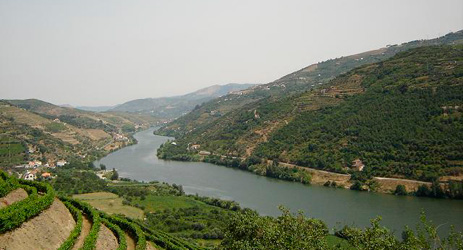Credit: pixabay.com
Touriga Nacional is known for making darkly coloured, rich, tannic and complex wines, most commonly around a concentrated kernel of black fruits.
It enjoys ageing and, although best known for its role in the Douro Valley’s Port blends, has drawn comparisons to Cabernet Sauvignon during the resurgence for unfortified, Portuguese red wines so far this century.
Despite having a reputation for low yields and being difficult to cultivate, Touriga Nacional also stands up relatively well to heat and has shown resistance to fungal diseases in vineyards.
These are key reasons why Bordeaux winemakers recently saw fit to include Touriga Nacional among one of seven ‘new’ grape varieties to be allowed into blends for Bordeaux and Bordeaux Supérieur appellation wines from next year.
In California, producer Larkmead last week named Touriga Nacional as one of the varieties being planted in its new research vineyard, near to Calistoga.
Both moves reflect efforts to mitigate the anticipated effects of climate change.
But many wine critics and winemakers have long pondered why Touriga Nacional has not achieved greater acclaim before, irrespective of its ability to withstand global warming.
This is a cautious traveller, both domestically and further afield.
Despite a strong claim to be Portugal’s signature grape, Beverley Blanning MW wrote inDecanter in 2004 that Touriga Nacional was starting to be considered by more winemakers in southern Portugal – beyond its heartlands of the Douro and the Dão.
In 2001, John Downes MW wrote in Decanter that Touriga’s red wine potential had yet to be discovered internationally.
‘What’s the bet an Aussie winemaker discovers its powers in a warm French region,’ Downes said. ‘Maybe we’ll soon see Touriga D’Oc. Don’t forget it was my idea!’
Australia itself is one of the producer countries that has shown most interest in Touriga Nacional in the intervening years. In 2017, Wine Australia called the grape ‘one to watch’.
Back in 2001, Downes referred to Touriga’s ‘Jekyll and Hyde’ character at the time.
‘The smiling side of Touriga Nacional’s character is that with enormous reserves of black fruits and massive mouth-filling tannins, it’s a must for classic vintage Port,’ said Downes, who also detailed rising interest in Touriga within a new generation of unfortified reds in the Douro.
On the ‘darker side’ of Touriga’s character, Downes said, ‘The problems start in the vineyard. Firstly, the grape is an incredibly low yielder, often giving less than half a litre of juice per vine. The vines are difficult to cultivate and although the yield is low the plant’s vigour is very high.’
Touriga Nacional’s traditional use in blends may also mean that it has not garnered the publicity of a solo performer.
In Port, it is one of the five central varieties, alongside Touriga Franca, Tinto Cão, Tinta Barroca and Tinta Roriz – better known as Tempranillo.
For unfortified reds, Touriga Nacional varietal wines have increasingly come to the fore in the last couple of decades, but blending has also been common, such as with Touriga Franca, to bring balance in the glass.
Blanning wrote, ‘Touriga Nacional is a shining light in the often impenetrable fog of Portuguese grape varieties. In a line-up of Portuguese wines, time and again the sheer quality of this noble grape lifts and distinguishes a blend. Vinified as a single varietal, it can astonish with its depth and complexity.’
Expect to see more of the world talking about Touriga in the decades to come.
Translated by Leo / 孔祥鑫
All rights reserved by Future plc. No part of this publication may be reproduced, distributed or transmitted in any form or by any means without the prior written permission of Decanter.
Only Official Media Partners (see About us) of DecanterChina.com may republish part of the content from the site without prior permission under strict Terms & Conditions. Contact china@decanter.com to learn about how to become an Official Media Partner of DecanterChina.com.





Comments
Submit